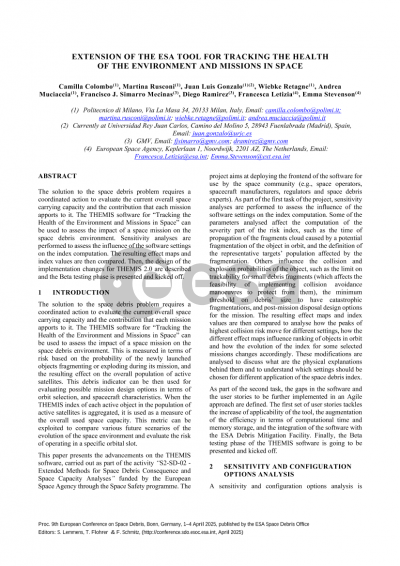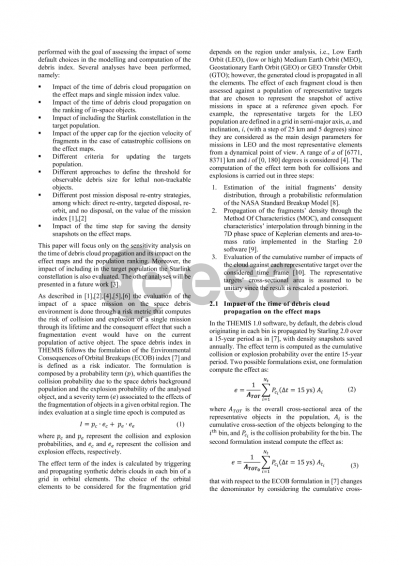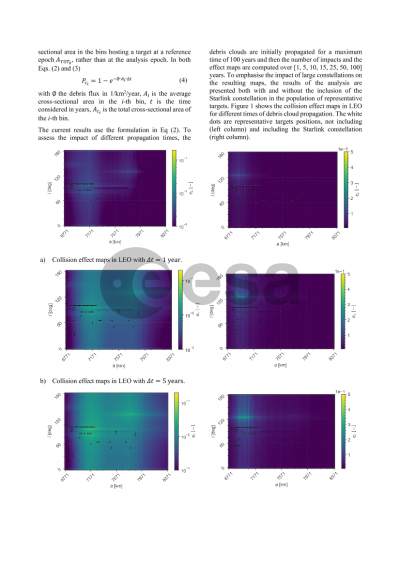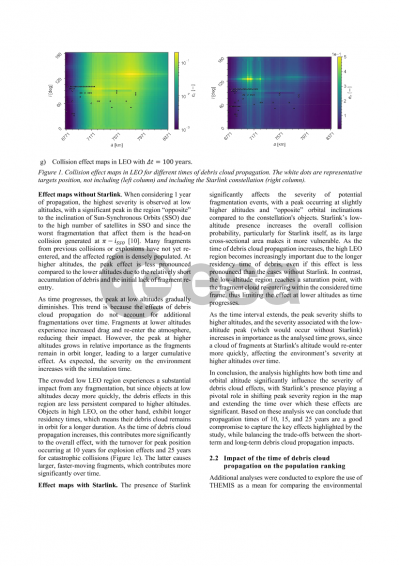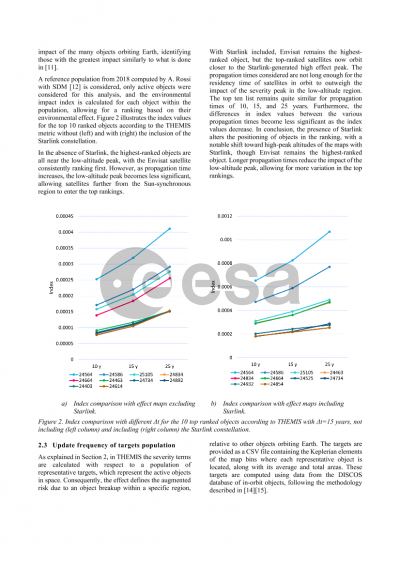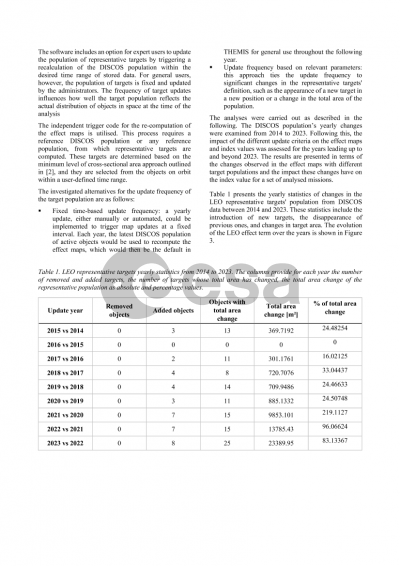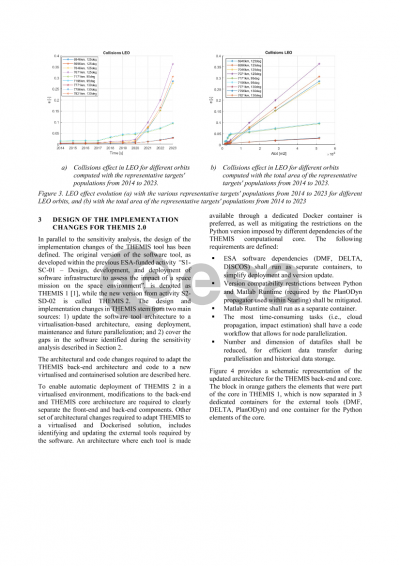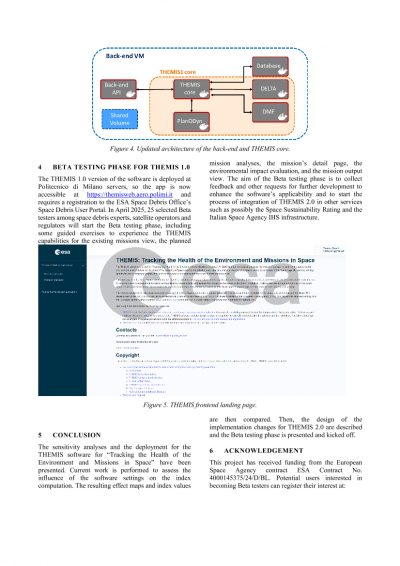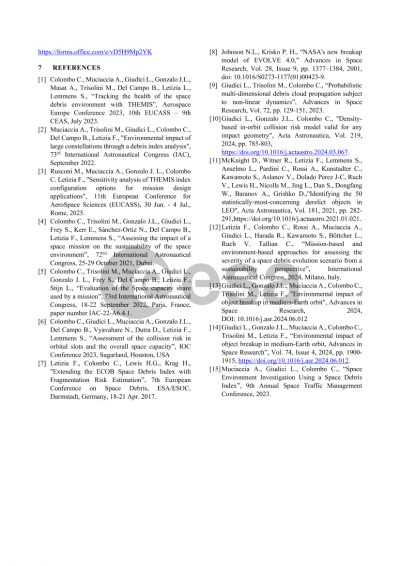Document details
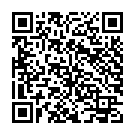
Abstract
The solution to the space debris problem requires a coordinated action to evaluate the current overall space carrying capacity and the contribution that each mission apports to it. The THEMIS software for “Tracking the Health of the Environment and Missions in Space” can be used to assess the impact of a space mission on the space debris environment. This is measured in terms of risk based on the probability of the newly launched spacecraft fragmenting or exploding during its mission and the resulting effect on the overall population of active satellites. This debris indicator can be then used for evaluating possible mission design options in terms of orbit selection, and spacecraft characteristics. When the THEMIS index of each active object in the population of active satellites is aggregated, it is used as a measure of the overall space carrying capacity. This metric can be exploited to compare various future scenarios of the evolution of the space environment and evaluate the risk of operating in a specific orbital slot.
This paper presents the advancements of the follow-on of the THEMIS project, funded by the European Space Agency through the Space Safety programme. The project aims to deploy the tool online for use by the space community (e.g. space operators, spacecraft manufacturer, regulators and space debris experts). As part of the first task of the project, sensitivity analyses are performed to assess the influence of the software settings on the index computation. Some of the parameters analysed affect the computation of the severity part of the risk index, such as the time of propagation of the fragments cloud caused by a potential fragmentation of the object in orbit, and the definition of the representative targets population affected by the fragmentation. Others influence the collision and explosion probabilities of the object, such as the limit on trackability for small debris fragments, the catastrophic collisions threshold, and post-mission disposal design options for the mission. The resulting effect maps and index values are then compared to analyse how the peaks of highest collision risk move for different settings, how the different effect maps influence ranking of objects in orbit and how the evolution of the index for some selected mission changes accordingly. These modifications are analysed to discuss what are the physical explanations behind them and to understand which settings should be chosen for different application of the space debris index.
As part of the second task, the gaps in the software and the user stories in an Agile approach to be further implemented are defined. The first set of user stories tackle the increase of applicability of the tool, the augmentation of the efficiency in terms of computational time and memory storage, and the integration of the ESA Debris Mitigation Facility in the software. Finally, the Beta testing phase of the THEMIS software is going to be presented and kicked off.
Preview
